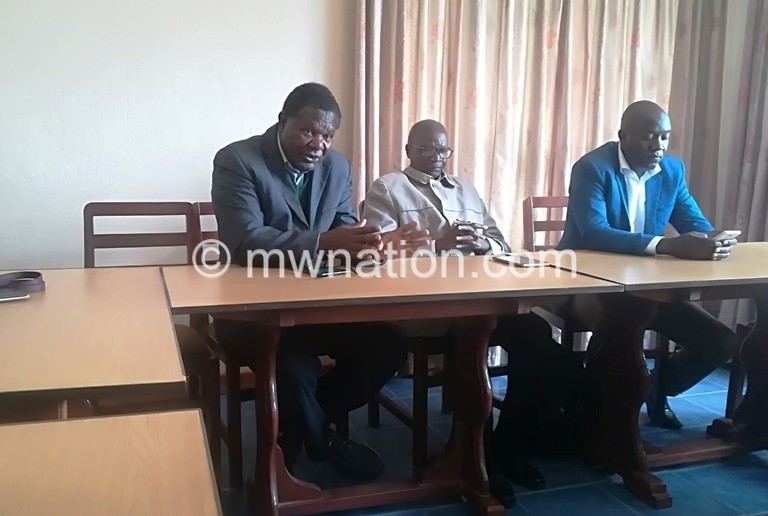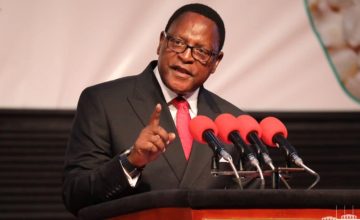Anti-Quota movement queries form 1 second selection
Malawi’s Ministry of Education, Science and Technology (MoEST) decision to base the Form One second selection on merit has stirred debate with some quarters questioning its sincerity and others arguing the system disadvantages the girl child.
During a press conference in Mzuzu on Monday, the Quota Must Fall Movement also wondered how up to 17 000 students could fail to report for school when government initially said it had considered proximity and economic factors in their selection.

But MoEST Principal Secretary Justin Saidi has said the government has done the best it could have done to balance the equation.
The movement, a grouping that advocates for the abolition of quota system of selecting students to institutions of higher learning, has also noted dominance of learners from Southern Region districts of Phalombe and Mulanje to national secondary schools.
Quota Must Fall Movement spokesperson the Reverend William Mumba said government owes the nation an explanation as to how 17000-plus students could not take up their Form One spaces in public schools.
He said: “We are told 3105 learners have been selected to other conventional secondary schools in the country to take up spaces not occupied after first selection. It is not clear how 3 000-plus students could not report for school leaving all the open spaces being filled up during second selection.
“Students who failed to qualify for spaces in the national secondary schools during first selection, suddenly qualify for space in national secondary schools during second selection. Can government clarify the criteria used in this case for such students to qualify this time round?”
The movement also faulted government for selecting more students from the Southern Region to national secondary schools with Robert Blake and Dedza getting seven—three from Mulanje and four from Phalombe.
Robert Laws in Mzimba has 12 new students (one from Lilongwe, three from Mulanje and eight from Phalombe); Zomba Catholic has two, both from Thyolo and Nkhata Bay Secondary School has five from Phalombe, two each from Mulanje and Chikwawa while Mzuzu Government has been assigned nine from Phalombe, one each from Blantyre and Balaka, seven from Central Region districts and three from the Northern Region.
The movement’s chairperson Bina Shaba insisted that even the second selection has marginalised and discriminated against some sections of the Malawi society in terms of access to education.
The Quota Must Fall Movement has threatened unspecified action if government does not address these anomalies before the official opening of schools on January 6 2020.
Government announced the abolishment of quota system in selecting students to secondary schools, opting for the merit system starting with the second selection after discussions with the CCAP Synod of Livingstonia.
On December 27, Minister of Education, Science and Technology William Susuwele Banda announced the second selection in which 17 831 students have been selected.
Through the use of merit system, the minister said 125 were selected to national secondary schools, 3 105 students to other conventional secondary schools and 14 381 students to community day secondary schools.
In an analysis posted on his Facebook page, education rights activist Limbani Nsapato said out of the 125 students selected to national secondary schools, 29 students representing 23.2 percent are from the Northern Region, 17 or 13.6 percent from the Central Region and 79 representing 63.2 percent are from the Southern Region.
The analysis highlights that the first selection had shown that 1 893 students were selected comprising 267 (representing 14.1 percent) from the North, 782 (41.3 percent) from the Centre and 844 (44.5 percent) from the South.
Said Nsapato: “A comparative analysis shows that North has gained by +9.1 percent while South has gained by +18.7 percent, but the Centre has lost by -27.7 percent. This would imply that the best winner of merit principle is the South while the loser is the Centre.”
He also contends that the merit principle has disadvantaged girls, becoming now a setback to move towards gender parity while on the economic front, the system is also said to have disadvantaged girls from rural areas.
In an interview, Saidi wondered whether the Quota Must Fall Movement understands the term merit or not.
He said: “When we are selecting, we use row scrolls. Each candidate has got own marks, maybe he got 70 or 90 percent we get the total. We use row scrolls, where you have totals for all subjects. If you are doing selection, first you identify the number of vacancies, and in this case for male students in national secondary schools we had 71 places.
“In the first selection we had a cut-off point depending on the grades, so in the second one, it was a matter of continuing from where we stopped, according to their total marks. Everybody gets into this list and after selecting that is where now you know which districts they wrote the exams from.”
When the quota system was first introduced in 1993, a group of students from the University of Malawi (Unima), led by former Attorney General Charles Mhango, successfully sued Unima Council. The court later declared that the quota system of selection was discriminatory and had no solid foundation.
Some people want the quota system of selecting students in public universities abandoned.
During the first selection, MoEST selected 82 072 students out of which 1 893 were selected into national secondary schools.
From the 1 893 students selected to national secondary schools, 844 or 46 percent were from the South, 782 representing 41 percent were from the Central Region and 267 representing 14 percent were from the North.





